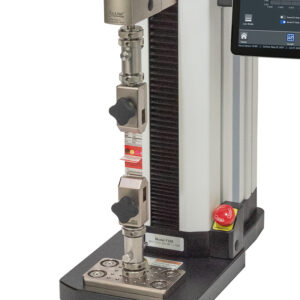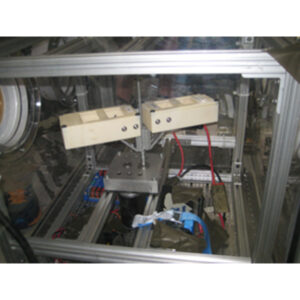Characterizing The Quality of Bullet Casings Through Force Measurement
Background:
During the manufacturing process of a firearm cartridge, the bullet is pressed into the mouth of the casing. Whether done by hand, or on a larger production scale, the common expectation is that the inner diameter of the mouth is manufactured precisely, allowing for a press-fit of appropriate and consistent force.
Details
A manufacturer of rifle bullet casings has been using a Mark-10 ESM303 motorized test stand and force gauge to check sample batches in their production facility. The test stand is set to a certain speed, for consistency from test to test. A custom fixture engages the extraction groove in the casing, while a custom tool simulating the bullet is attached to the force gauge. As the test stand moves the force gauge downward and presses the tool into the casing’s mouth, the gauge records the maximum compression force. The test stand then automatically reverses direction, and the gauge also records the maximum tension force.
A high/low range of acceptable forces was established by the manufacturer, giving them the data they need to adjust their manufacturing process when needed. They use MESURgauge Plus software to initiate test stand motion and collect data from the system. The data is collected either as multiple peak force readings from a batch of samples, or as continuous data from individual samples, with corresponding graph of force vs. time. The software can also collect force vs. travel information for graphing and further analysis.
In using force measurement to characterize insertion and withdrawal forces, the manufacturer ensures a predictable and satisfactory experience for their customers.

Products used:
- ESM303 motorized test stand
- Model M5-500 force gauge
- MESURgauge Plus software
- Custom designed fixtures
 180° T-Peel Testing – ASTM F88 / D1876
180° T-Peel Testing – ASTM F88 / D1876 Keyswitch Actuation Force Measurement
Keyswitch Actuation Force Measurement Hand Sanitizer Packaging Analysis
Hand Sanitizer Packaging Analysis Measuring Mass in A Weightless Environment
Measuring Mass in A Weightless Environment Verifying Goggle Component Quality and Durability
Verifying Goggle Component Quality and Durability
